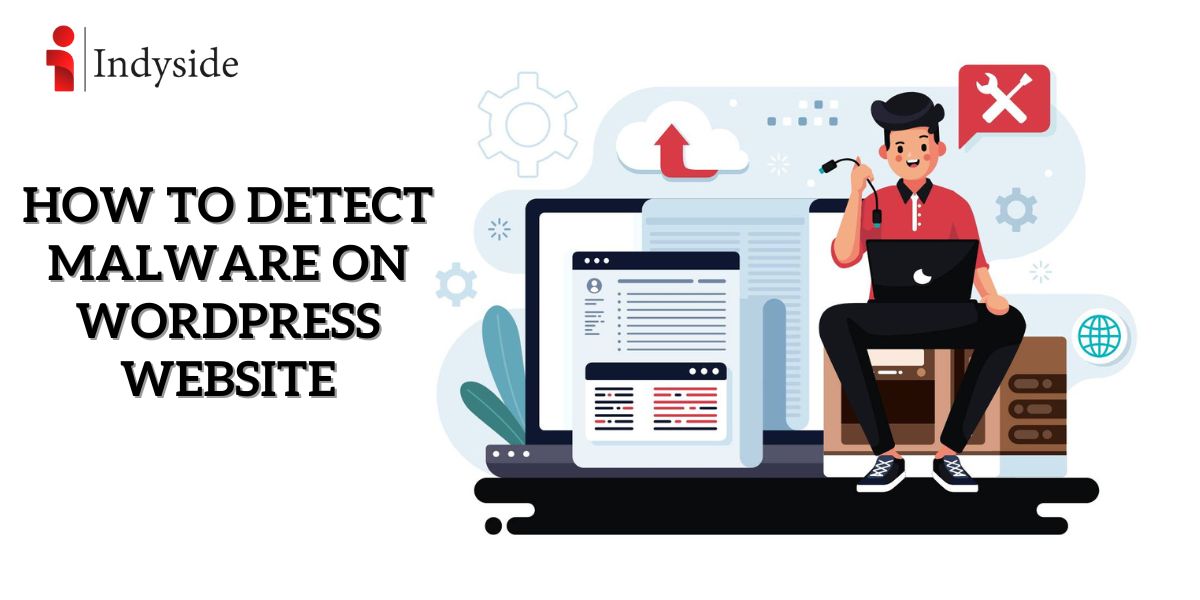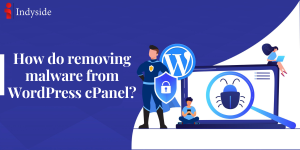01 .Introduction
As the popularity of WordPress continues to soar, the need to Detect Malware on WordPress Websites has become increasingly paramount. With the rise in malware attacks, safeguarding your website’s security, functionality, and reputation has never been more crucial. Early detection of Malware plays a vital role in preventing further harm. Therefore, this article will delve into effective techniques to naturally detect and deal with Malware on a WordPress website, ensuring the continued protection of your valuable online presence.
02 .Understanding Malware
Malware is any program designed to attack or exploit computers, such as websites. It can come in many types, such as ransomware, viruses, worms, trojans, spyware or. Hackers frequently introduce Malware to vulnerable websites to gain access to sensitive data, take over sensitive information or distribute Malware. Detecting Malware quickly is vital to reducing the negative impact on your WordPress website.
03 .Different types of Malware attacks on WordPress
WordPress sites can become targets for various types of Malware. Some common examples include:
Phishing attacks: hackers trick victims into sharing sensitive data via false websites or email messages.
Injection Attacks Injection Attacks: Malicious code is injected into vulnerable parts of websites by exploiting security flaws.
Security Backdoor Exploits: Attackers set up secret access points inside the site’s files, which allows them to remain in control after the initial cleaning.
Malicious redirects: Users are directed to potentially dangerous or dangerous websites, which could end up harming your website’s reputation.
04 .Signs and Symptoms of a Malware Infection
The detection of Malware in the WordPress website requires careful monitoring. Be aware of these warning signs and warning signs:
04.1 .Unusual Website Behavior
Your website could exhibit unusual behavior, like long loads, frequently occurring crashes, or strange errors.
04.2 .Suspicious Code and Modifications to Files
Examine your website’s code and the files to see if there are any unauthorized modifications. Malware typically leaves behind a hidden or obscure code.
04.3 .Search Engines: Blocklisting
If search engines such as Google identify your site as potentially dangerous, it could signal an infection with Malware.
04.4 Not-Preferred Pop-Ups and Ads
Malware could display intrusive pop-ups or even inject unwanted advertisements onto your site, disrupting your users’ experience.
05 .Scanning and detecting Malware on a WordPress website
To effectively detect Malware, use manual methods and special security tools. Here are some suggested methods:
05.1 Manual Techniques for Detecting Malware
The File Integrity Test: Examine your website’s file with an unaltered backup to find any suspicious or altered files.
Database Inspection: Check the contents of your WordPress Database for strange entries or tables you need to familiarize yourself with.
Internet Traffic Analysis: Examine your website’s traffic logs for unusual patterns or suspicious IP addresses.
06 .Utilizing Security Plugins to Detect Malware
Security software provides an automatic and proactive method of detecting Malware. Check out these top WordPress security tools:
Sucuri Security: Provides web security, monitoring of Malware, and cleaning services.
Wordfence is the ability to detect threats in real time, protect against firewall attacks, and the ability to scan for Malware.
07. Remove Malware from the WordPress website.
If you’ve discovered malicious code on the WordPress website, taking immediate action is essential to minimize the harm. Take these actions to eliminate Malware efficiently:
Separate and Backup: Remove your site from the network and create a backup copy of all your data and databases.
Find Infected Files: Scanning the directories and directories to determine those infected. Eliminate any suspicious code or files.
Cleanse the Database Cleanse the Database: Remove any unauthorized entries or content that is suspicious from Your WordPress database.
Update WordPress and plugins: Make sure that your WordPress themes, the core of your site, and plugins are up to current. Outdated software is more prone to malware attacks.
Change Passwords: Set all passwords that are associated with your site, including admin accounts, FTP, admin, and database credentials.
Reconnect and Test Connect your website with the internet and rigorously test its performance. Watch it closely for indications of a new infection.
08. Prevention Measures to Protect Your WordPress Website
Preventing malware-related infections is essential to ensure your website’s security and reliability of your WordPress website. Use the steps below to prevent malware infections:
Periodic backups and Updates: Make regular backups for your site’s data and databases. Also, ensure that your WordPress theme, your website’s core, and your plugins are up to date.
Strong Passwords and Users Permissions Ensure strong passwords for all accounts of users. Limit permissions granted to users to minimize the possibility of unauthorized access.
A secure hosting environment: Select an experienced and secure hosting service. Consider features such as security firewalls and malware scanners and the ability to detect intrusions.
Learning for yourself and the Team Keep up-to-date with the most recent information on security best techniques for WordPress. Instruct your team members on identifying and dealing with potential security threats.
09. Malware Removal Services in India
Suppose you’re having trouble with a malware-infected WordPress website or require professional assistance in identifying and removing Malware. In that case, consider using the services of reliable malware removal companies in India. These professionals have the expertise and skills to detect and get rid of Malware, assuring your website’s security and smooth operation of your site.
In the end, detecting Malware on the WordPress website requires an active strategy and the application of solid security measures. By being alert and employing the appropriate tools to scan and tools, you can safeguard your site from any security threats. Remember that prevention is essential, so you should ensure regular updates, secure plugins, and monitoring to keep your site secure and free of Malware WordPress websites.
Remember to always prioritize the security of your WordPress website, and if you require assistance, don’t hesitate to seek professional help from malware removal services in India.
10. Regular Backups and Updates
Regular backups and updates play a vital role in maintaining the security and integrity of your website. By regularly backing up your website’s files and database, you can ensure that in the event of a security breach or system failure, you have a recent and clean version to restore. Moreover, keeping your website’s software, themes, and plugins up to date is crucial to address any known vulnerabilities and security loopholes. Regular updates ensure that you have the latest security patches, reducing the risk of unauthorized access and potential attacks.
11. Strong Passwords and User Permissions
One of the simplest yet most effective ways to enhance website security is by using strong passwords and managing user permissions effectively. Encourage your team and website users to create strong passwords that are unique, complex, and not easily guessable. Implementing a password policy that enforces a combination of uppercase and lowercase letters, numbers, and special characters can significantly strengthen your website’s defense against brute force attacks. Additionally, limiting user permissions to only essential tasks and granting administrative access sparingly can minimize the potential damage caused by compromised accounts.
12. Secure Hosting Environment
Choosing a secure hosting environment is crucial to safeguarding your website from external threats. Opt for reputable hosting providers that prioritize security measures, such as regular system updates, firewalls, malware scanning, and intrusion detection systems. Additionally, consider hosting your website on a dedicated server or a virtual private server (VPS) to reduce the risk of cross-contamination from other websites and improve overall security.
13. Educating Yourself and Your Team
Investing in education and training is essential to build a security-conscious culture within your organization. Stay updated with the latest security trends, vulnerabilities, and best practices by following reputable sources, attending webinars, and participating in relevant forums and communities. Educate your team members about common security risks, such as phishing attacks and social engineering, and encourage them to be vigilant and proactive in identifying and reporting potential threats. By fostering a culture of security awareness, you can significantly reduce the risk of successful cyberattacks.
14. Conclusion
Finding the presence of Malware in your WordPress website requires a mix of vigilante measures, proactive steps, and timely action. You can protect your site from possible danger by understanding the various kinds of malware attacks and the indicators of infection and employing effective detection methods. Be sure to upgrade your software, adopt strict security measures, and remain educated on new threats to ensure the security of your WordPress website.
FAQs (Frequently Asked Questions)
Q:1 Does Malware impact my WordPress SEO ranking?
A:1 The answer is yes; Malware can affect the SEO ranking of your website. Search engines could consider your website dangerous, which could result in decreased visibility and less organic traffic.
Q:2 Are security plugins for free efficient in finding and taking out Malware?
A:2 The free security tools can offer the basic protection needed; however, for greater security, such as malware identification and removal, consider purchasing premium security software and professional security services.
Q:3 What is the frequency I should test my WordPress website for Malware?
A:3 It is recommended to check your site for Malware at least every week. If you manage sensitive data or experience a higher traffic volume, you should consider frequent scans.
Q:4 Could malware infection cause data security breaches within my WordPress website?
A:4 Yes, Malware can cause damage to sensitive information stored in the WordPress website, resulting in the possibility of data security breaches. Implementing robust security measures and regularly scheduled backups is essential to avoid such instances.
Q:5 Should I inform my site visitors that I discovered malicious code on your WordPress website?
A:5 It is essential to inform your visitors when you discover Malware on your website. Please explain the problem clearly and ensure they know that the necessary steps are in place to fix the problem.
You May Also Like: The Website Migration Debunked Myth: How to Do It Right




